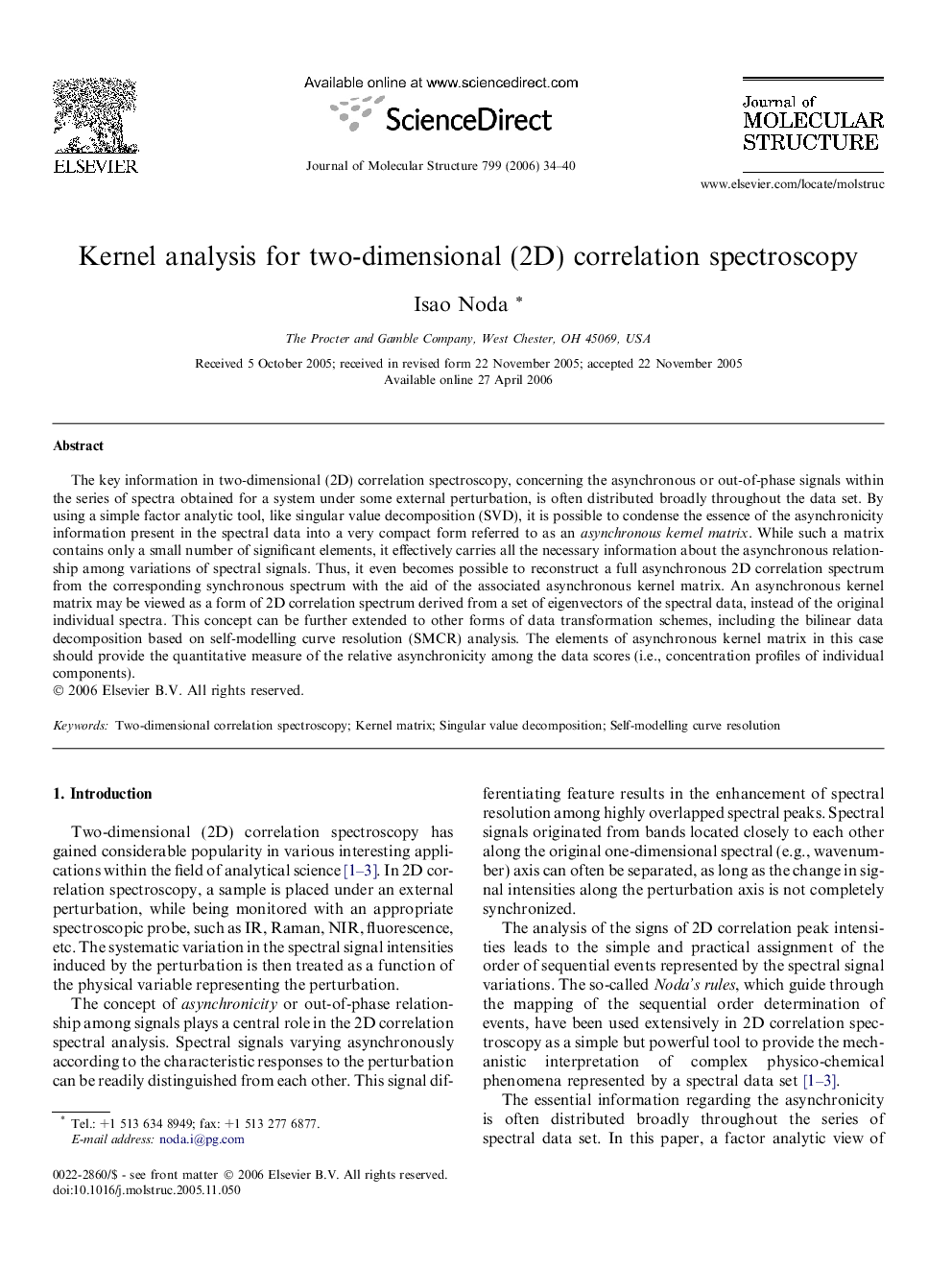| Article ID | Journal | Published Year | Pages | File Type |
|---|---|---|---|---|
| 1408246 | Journal of Molecular Structure | 2006 | 7 Pages |
The key information in two-dimensional (2D) correlation spectroscopy, concerning the asynchronous or out-of-phase signals within the series of spectra obtained for a system under some external perturbation, is often distributed broadly throughout the data set. By using a simple factor analytic tool, like singular value decomposition (SVD), it is possible to condense the essence of the asynchronicity information present in the spectral data into a very compact form referred to as an asynchronous kernel matrix. While such a matrix contains only a small number of significant elements, it effectively carries all the necessary information about the asynchronous relationship among variations of spectral signals. Thus, it even becomes possible to reconstruct a full asynchronous 2D correlation spectrum from the corresponding synchronous spectrum with the aid of the associated asynchronous kernel matrix. An asynchronous kernel matrix may be viewed as a form of 2D correlation spectrum derived from a set of eigenvectors of the spectral data, instead of the original individual spectra. This concept can be further extended to other forms of data transformation schemes, including the bilinear data decomposition based on self-modelling curve resolution (SMCR) analysis. The elements of asynchronous kernel matrix in this case should provide the quantitative measure of the relative asynchronicity among the data scores (i.e., concentration profiles of individual components).
